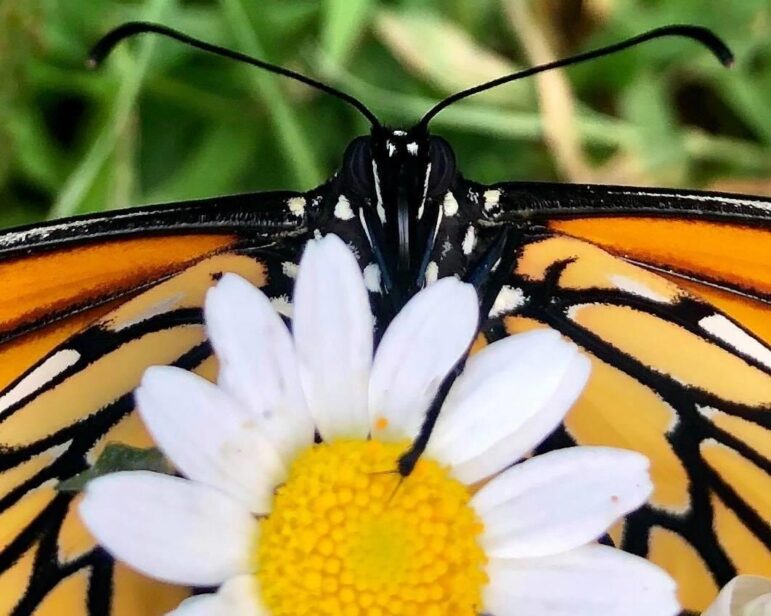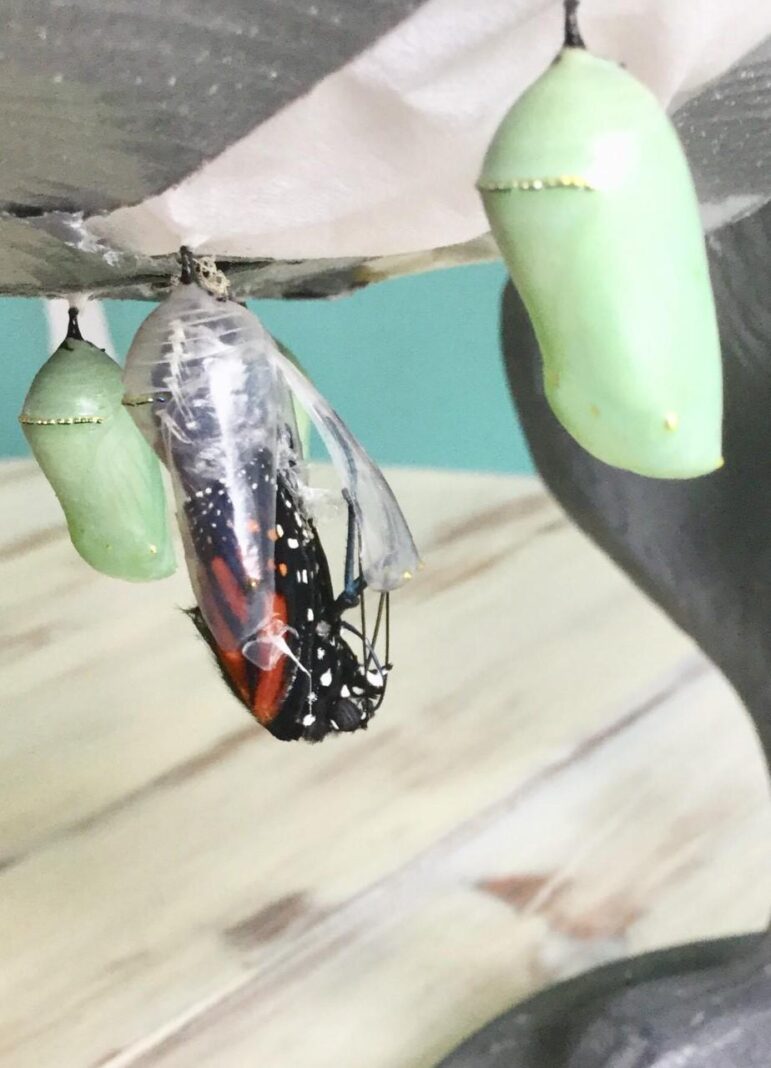By TAYLOR HAELTERMAN
Capital News Service
LANSING — Insect populations fluctuate from year to year, depending on factors like weather and breeding, but the long-term downward trend in the North American monarch butterfly population is concerning conservationists.
The average monarch population from 2010 to 2020 is less than half of what it was the decade before, said Karen Oberhauser, the coordinator of the citizen science-based Monarch Larva Monitoring Project and arboretum director at the University of Wisconsin-Madison.
“Over the course of the last 10 years, we’ve had some high years and some low years, but the high years from 2010 to 2020 are only as high as the average years from 2000 to 2010,” Oberhauser said. “So, we’re really seeing a change.”
At the Eaton Rapids family-run hobby farm Fanciful Farming, Danielle Raad has noticed the decrease.
Raad is working to conserve monarchs by educating the public through the farm’s Facebook page and by raising wild monarchs, but this has been her worst year for spotting the orange-and-black insects, she said.
“This year it was shocking,” Raad said. “We have three. Three chrysalis total. Last year around this time, if my records are correct, we had a couple dozen.”
The biggest driver of the population decrease is loss of habitat, Oberhauser said. Milkweed is the only plant monarchs will lay eggs on and the only plant the caterpillars will feed on, so loss of prairie land and fields to urban development and agriculture makes a significant impact.
One of the best ways to help monarchs is by creating pollinator gardens, said Katie-Lyn Bunney, the education coordinator for Monarch Joint Venture, a St. Paul, Minnesota-based organization working to conserve and protect the monarch migration.
“We as individuals can plant habitat on whatever area we are able to impact directly whether that’s a roadside, your backyard, a school yard, a pollinator garden at your place of work or place of worship, community gardens, you name it,” Bunney said. “There’s a place for pollinator habitat pretty much anywhere.”
The gardens should be full of both milkweed and nectar plants so adult monarchs can feed on the nectar and lay their eggs on the milkweed, she said. The use of pesticides, insecticides and herbicides around the garden isn’t recommended as they can be toxic to the insects.
Other ways to help are by educating oneself and others, participating in citizen science projects and donating to a conservation organization.
However, captive monarch breeding and rearing monarchs in large numbers are not effective conservation efforts, Oberhauser said. Captive breeding can lead to disease spread and long-term genetic changes that may prevent them from surviving in the wild.
“I don’t think there are as many risks associated with people just bringing in a few caterpillars to rear,” Oberhauser said. “It’s not a risky behavior, but it probably isn’t going to help the whole population.”
The official yearly population count will be released in December when the monarchs migrate from the United States and Canada to Mexico.
How the numbers turn out this year will depend on the second generation of monarchs laying eggs over the next month, Oberhauser said.
Taylor Haelterman reports for WKAR Radio and Great Lakes Echo.

